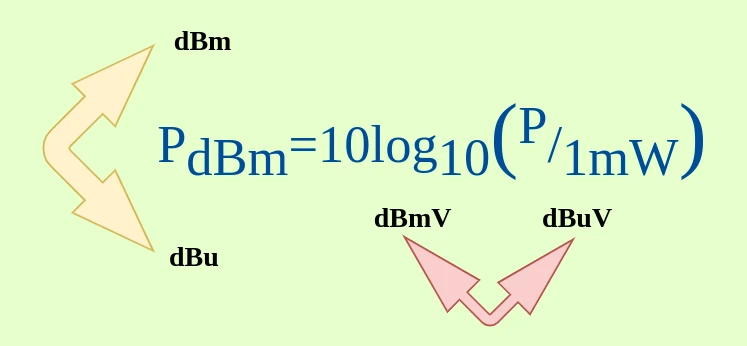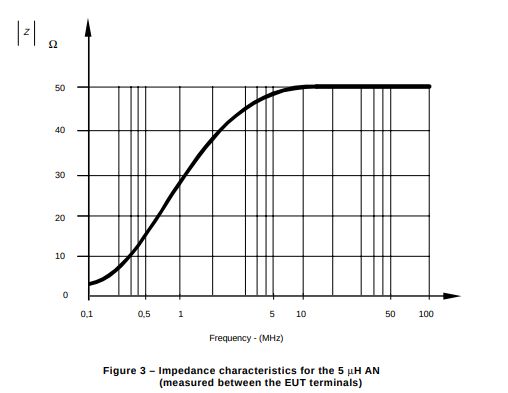➔ Index of ⦁ Introduction to Electromagnetic Compatibility ⦁
Introduction to EMC: Units of measurement
EMC most used units of measure and their conversion rules: a quick overview on a simple but fundamental topic in the world of electromagnetic compliance
Decibel

When working with EMC and radiofrequency instruments and tools, you will find out that many measurements are presented in dB or similar units. Well, all measures are converted for sake of comfort and cleanliness since dB and derived units allow to express very high or small amplitude signals and to easily relate power and voltage measurements.
Fun fact: the prefix -deci means 'one tenth of' whereas the 'Bel' is a unit born at Bell laboratories to express the (power or amplitude) ratio between an output and an input signal; the unit of measure 'Bel' is named after the British engineer Alexander Graham Bell and for this reason the B is uppercase!
Gain
Gain in dB is used to express the ratio between output and input power in a multi-port system. Remembering that, in natural numbers the ratio of power is equivalent to the ratio between the output and input voltages squared $$G = \frac{P_{out}}{P_{in}} = \frac{\frac{V_{out}^2}{R}}{\frac{V_{in}^2}{R}} = \frac{V_{out}^2}{V_{in}^2}$$ power ratio in dB can be calculated as $$G_{dB} = 20log_{10}\left( \frac{V_{out}}{V_{in}} \right)$$ or $$G_{dB} = 10log_{10}\left( \frac{P_{out}}{P_{in}} \right)$$
Voltage
When you perform a voltage measure, you can use both dBmV and dBuV $$V_{dBmV} = 20log_{10}\left( \frac{V}{1mV} \right)$$ $$V_{dB\mu V} = 20log_{10}\left( \frac{V}{1\mu V} \right)$$
Current
When you perform a current measure, you can use dBmA, dBuA, dBnA and dBpA, according to the entity of the measure. You could go even lower in very sensitive or low power systems. $$I_{dBmA} = 20log_{10}\left( \frac{I}{1mA} \right)$$ $$I_{dB\mu A} = 20log_{10}\left( \frac{I}{1\mu A} \right)$$ $$I_{dBnA} = 20log_{10}\left( \frac{I}{1nA} \right)$$ $$I_{dBpA} = 20log_{10}\left( \frac{I}{1pA} \right)$$
Power
When you perform a power measure, you can use dBW dBmW or dBuW, according to the entity of the measure. Remember that, very often, 'W' is omitted when the unit is written. You could go even lower in very sensitive or low power systems. $$P_{dBW} = 10log_{10}\left( \frac{P}{1W} \right)$$ $$P_{dBmW} = 10log_{10}\left( \frac{P}{1mW} \right)$$ $$P_{dB\mu W} = 10log_{10}\left( \frac{P}{1m\mu } \right)$$
Equivalences
Typically, all the conversions are made considering a load of 50Ohm, so, if you want to pass from a voltage to a power measurement, just do this: $$1 dBmV = 20log_{10}\left( \frac{V}{1mV} \right) \quad \rightarrow \quad V = 1.122mV$$ $$P = \frac{1.122mV^2}{50Ohm} = 2.517768^{-8} W$$ $$P_{dBm} = 10log_{10}\left( \frac{2.517768^{-8} W}{1mW} \right) = -45.99 dBm$$
Knowing this, you can do all the conversions you want. However, let me provide you some quick conversion in the table below to simplify your job:
- dBmV to dBm: dBm = dBmV - 47
- dBm to dBmV: dBmV = dBm + 47
- dBuV to dBu: dBu = dBuV - 75
- dBu to dBuV: dBuV = dBu + 75
- dBm to Vrms: Vrms = 7.07*10(dBm-30)/20
Navigate
Comments
Be polite and respectful in the comments section. In case of doubts, read this before posting.
Posted comments ⮧
Comment section still empty.
INDEX
INFO
STATISTICS
PREVIOUS ARTICLE
CONTACTS
SHARE








